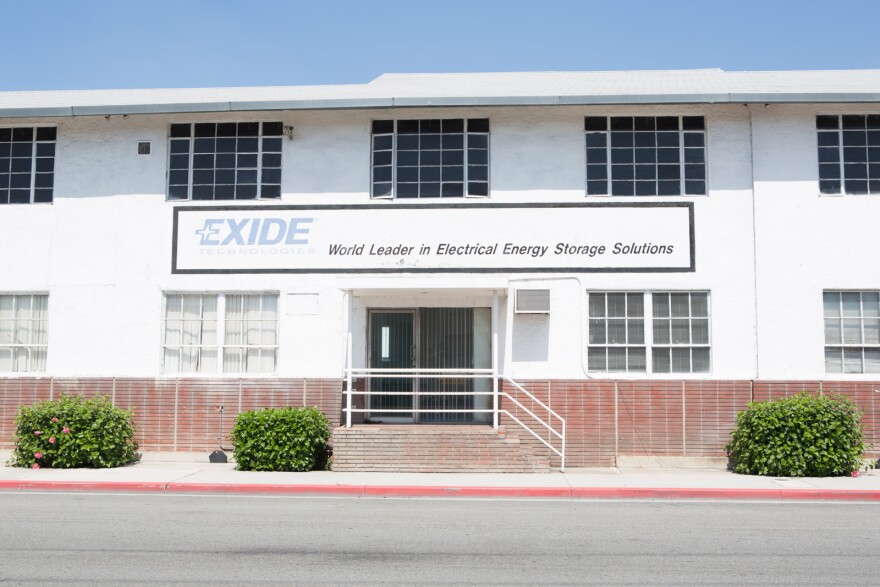This story is free to read because readers choose to support LAist. If you find value in independent local reporting, make a donation to power our newsroom today.
This archival content was originally written for and published on KPCC.org. Keep in mind that links and images may no longer work — and references may be outdated.
Analysis finds high blood lead levels near Exide, doesn't answer why

Young children living near the former Exide battery recycling plant in Vernon have higher levels of lead in their blood than those living farther away, but the age of their homes may be as important a factor as proximity to the facility, according to an analysis by the California Department of Public Health released Friday.
State environmental officials declined to draw definitive conclusions about the role lead emissions from the plant may have played in the elevated levels, saying the study was not designed to determine the sources of the lead.
The analysis did not measure other potential sources of lead, such as that emitted from cars on nearby freeways or lead paint in homes, said Gina Solomon, deputy secretary for science and health at the California Environmental Protection Agency.
The study was also limited in that it only looked at one year of data, and it involved very small numbers of children in the area closest to Exide, Solomon added.
Those factors "make it hard to draw resounding conclusions" about the relative importance of Exide's emissions, she said. "We can't say where the lead in a child's blood is coming from."
The analysis will be used "to further target and refine our efforts" to clean up lead from soil at homes in a 1.7-mile radius around the facility, said Ana Mascarenas, assistant director for environmental justice at the California Department of Toxic Substances Control.
Public health researchers analyzed blood tests of nearly 12,000 children under age 6 in an area reaching up to 4.5 miles from the now-closed plant. The tests were from 2012, the Exide facility's last full year of operation.
Only about 2,000 of the nearly 12,000 children lived in the 1.7-mile cleanup zone, said Solomon.
The analysis found that 3.58 percent of young children living within one mile of Exide had blood lead levels of 4.5 micrograms or more per deciliter of blood. That's the level the state has set as significantly higher than average and meriting measures to reduce future exposure.
That's compared with 1.95 percent of children in Los Angeles County overall who showed lead levels of 4.5 micrograms or more in 2012. In the broader study area, reaching out to 4.5 miles from the plant, 2.41 percent of children were in that category, according to the analysis.
But when researchers factored in the age of homes, the picture shifted. Of youngsters living in homes built before 1940, 3.11 percent had elevated blood lead levels, while only 1.87 percent of those living in homes built after 1940 had high levels.
As the analysts adjusted the data to account for other factors, "the effect of age of housing persisted," while "the effect of distance from Exide diminished greatly," said Solomon.
And the older the homes, the greater their impact, said Solomon.
The Department of Public Health delved more deeply into this question by performing a sub-study, comparing the ages of the homes of a group of nearly 300 children who had 4.5 micrograms or more with those of a group with lower levels. The researchers found "a very large increased risk" of elevated lead levels for children living in homes built before 1925, she said.
The study found that younger boys were at higher risk as well.
Exide smelted batteries in Vernon until last year, when the state ordered it to shut down after it operated for decades on a temporary permit. At the time, Toxic Substances Control said a few hundred homes closest to the site would be tested and cleaned up. Last August, the agency said up to 10,000 properties could be contaminated in a 1.7-mile radius around the smelter.
The state Legislature is in the process of approving Gov. Jerry Brown's request for $176.6 million in emergency funding to expedite the testing and cleanup of those properties.







